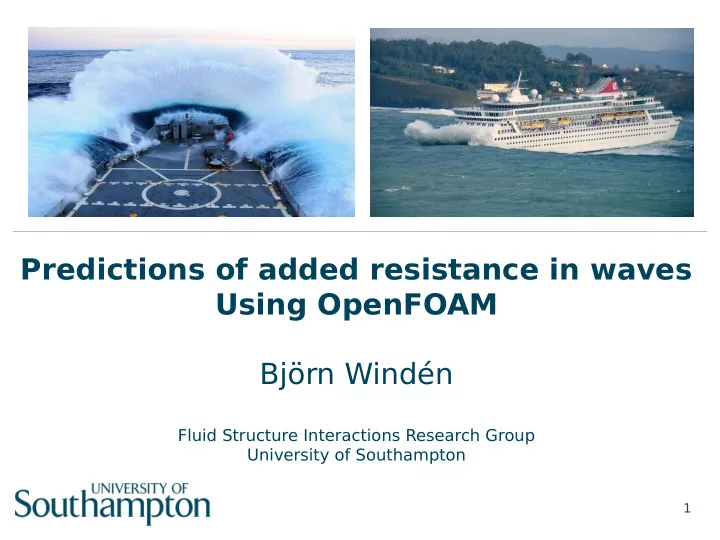

Predictions of added resistance in waves Using OpenFOAM Björn Windén Fluid Structure Interactions Research Group University of Southampton 1
Current goals • CFD • T owing T ank Experiments • Identification of important design features • Validation of OpenFOAM for predicting resistance in waves 2
Building a model step by step • Fixed Wigley hull in small amplitude waves • Correlation of amplitude and phase • Error monitoring when complexity is added 3
Progress • Wave propagation studies • Created a modified version of interFoam • Coupling of snappyHexMesh and refineMesh for free surface refinement 4
Wave propagation • Aprox 25-30 cells per wave height and length is sufficient in small amplitude waves (λ/H ~ 65) • Sufficient means that the waves retain 95% of their energy at a distance 3*λ from the inlet. 5
Modified interFoam (interWaveFoam) • Included “wave” modification in given regions specified by a waveDict • Crude modification of velocity to conform to a specified target veloity U = U 0 − U target ∗ C x , y , z U target • 6
Meshing • High λ/H with equal requirements for cell density for λ and H means high AR to save cells. • High AR does not work well with sHM • Standard sHM cannot split cells in specific directions only • refineMesh can split cells in any specified direction 7
Meshing issues • Wave propagation • Hull/fluid interaction 8
Meshing issues • Issues with using snappyHexMesh together with refineMesh 9
Solution? • Modify sHM to deal with single-direction cell splitting and thereby retain the continuous quality check. • Refine in different regions with different tools. • If the boundary layer mesh thickness is well specified, refineMesh can be set to ignore cells at a certain distance from the surface. 10
What's going on here? 11
What's going on here? 12
Thanks for letting us attend. Any questions? b.winden@soton.ac.uk 13
Recommend
More recommend